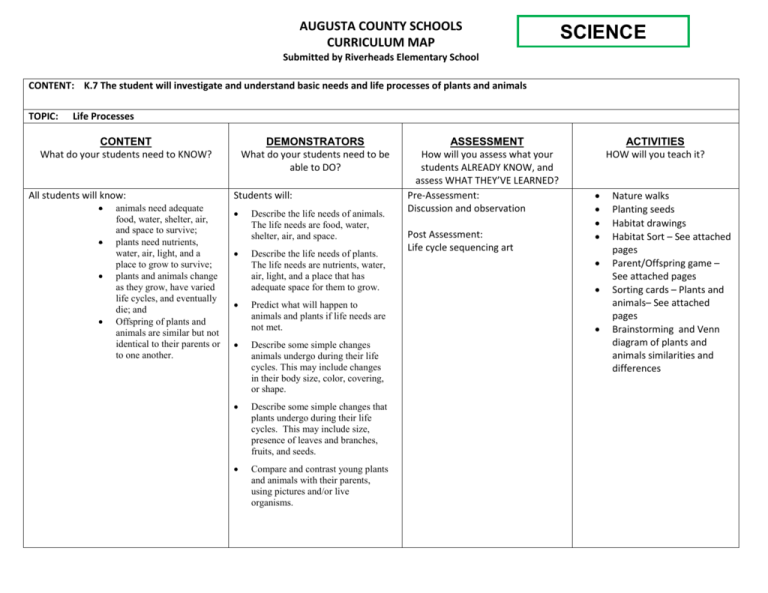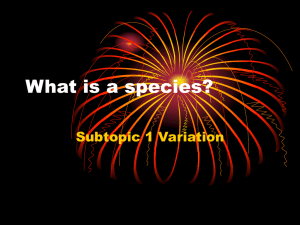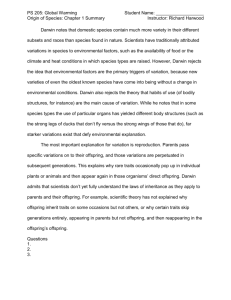Science SOL K.7 - Augusta County Public Schools
advertisement

AUGUSTA COUNTY SCHOOLS CURRICULUM MAP SCIENCE Submitted by Riverheads Elementary School CONTENT: K.7 The student will investigate and understand basic needs and life processes of plants and animals TOPIC: Life Processes CONTENT What do your students need to KNOW? All students will know: animals need adequate food, water, shelter, air, and space to survive; plants need nutrients, water, air, light, and a place to grow to survive; plants and animals change as they grow, have varied life cycles, and eventually die; and Offspring of plants and animals are similar but not identical to their parents or to one another. DEMONSTRATORS What do your students need to be able to DO? Students will: Describe the life needs of animals. The life needs are food, water, shelter, air, and space. Describe the life needs of plants. The life needs are nutrients, water, air, light, and a place that has adequate space for them to grow. Predict what will happen to animals and plants if life needs are not met. Describe some simple changes animals undergo during their life cycles. This may include changes in their body size, color, covering, or shape. Describe some simple changes that plants undergo during their life cycles. This may include size, presence of leaves and branches, fruits, and seeds. Compare and contrast young plants and animals with their parents, using pictures and/or live organisms. ASSESSMENT How will you assess what your students ALREADY KNOW, and assess WHAT THEY’VE LEARNED? Pre-Assessment: Discussion and observation Post Assessment: Life cycle sequencing art ACTIVITIES HOW will you teach it? Nature walks Planting seeds Habitat drawings Habitat Sort – See attached pages Parent/Offspring game – See attached pages Sorting cards – Plants and animals– See attached pages Brainstorming and Venn diagram of plants and animals similarities and differences DIFFERENTIATION How will you meet the needs of all students? Experiments Remediation or Enrichment Power Up Groups RESOURCES Seeds Soil Cups Sequencing cards Pictures of parents and offspring Smart Board Books and videos Eagle cam Picture cards for animal/plant sort and habitat sort Growing and Changing by Michelle Dubourg TEACHER NOTES: Animal/Plant Sort Animals and plants to match with habitats (Small pictures) Animals and plants to match with habitats (Large pictures) Habitat Picture Sorts Habitat Picture Sorts Habitat Picture Sorts Habitat Picture Sorts Habitats Parent/Offspring Match Parent/Offspring Game First, read Life Science Book: Growing and Changing by Michelle Dubourg . Then explain to the students what an offspring of a plant or animal is and discuss how offspring may or may not look like the adult animal or plant it came from. (Give examples like a caterpillar and butterfly, dog and puppy, acorn and oak tree) On the board write: Is it an animal or plant? What is its habitat? Does its offspring look like the adult? Divide the students into 2 groups. Give half the students a picture card of an adult animal or plant and give the other half a picture card of the off springs. Tell the students not to show their cards to each other. The students with the adult cards take turns one at a time answering the questions on the board and giving other clues about their adult. The students with the offspring cards try to guess which student has the adult to match their card. When a match has been made, the students show their cards to the group. Discuss the similarities or differences between the adult and its offspring. When all matches have been made, follow the same procedure but let the students that had the offspring cards first get the adult cards.











